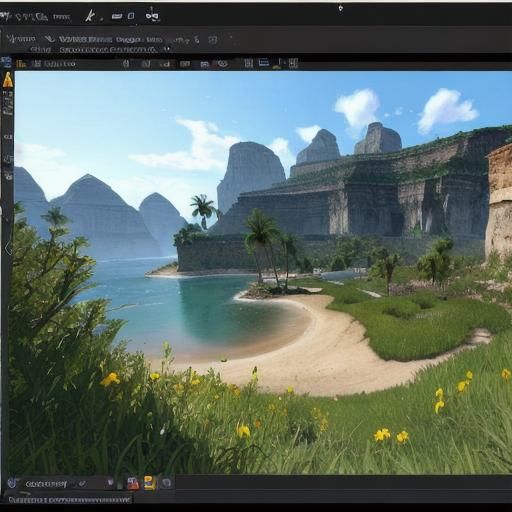Introduction:
Game development is an exciting and rewarding field, but it can also be challenging, especially if you’re just starting out. However, with the right tools and techniques, anyone can learn how to develop games using C++. In this comprehensive guide, we will cover everything you need to know to get started on your journey to game development.
Chapter 1: What is C++?
Before we dive into the world of game development, let’s first understand what C++ is. C++ is a general-purpose programming language that was developed by Bjarne Stroustrup in the 1980s. It is an object-oriented language that is widely used for developing operating systems, video games, and other applications that require high performance and low-level access to hardware resources.
C++ is a versatile language that can be used for both desktop and mobile game development. It is also compatible with various game engines such as Unity, Unreal Engine, and CryEngine, making it easy to develop games using C++.
Chapter 2: Setting up your development environment
The first step in developing games using C++ is setting up your development environment. This includes installing a code editor, compiler, and debugger. Some popular options for C++ development include Visual Studio, Code::Blocks, and Xcode.
Once you have installed the necessary tools, you will need to download and install a game engine such as Unity or Unreal Engine. These engines provide pre-built assets and tools that make it easier to develop games using C++.
Chapter 3: Learning the basics of C++
Now that you have your development environment set up, it’s time to start learning the basics of C++. Here are some key concepts and syntax that you should familiarize yourself with:
- Variables: These are containers for storing values such as integers, floats, and strings.
- Data types: There are several data types in C++, including int, float, char, and bool.
- Operators: Operators are symbols that perform actions on variables, such as addition (+) and multiplication (*).
- Control structures: These include if/else statements, loops (while and for), and switch cases.
- Functions: Functions are blocks of code that can be called by other parts of your program.
- Classes and objects: Classes and objects are used to create custom data types and encapsulate data and behavior.
- Inheritance: This is a mechanism for creating new classes from existing ones, allowing you to reuse code and add new functionality.
- Templates: These allow you to write functions that can work with different data types.
Chapter 4: Game development concepts in C++
Now that you have a basic understanding of C++, let’s dive into the world of game development. Here are some key concepts and techniques that you should familiarize yourself with:
- Object-oriented programming: This is a programming paradigm that uses objects to represent real-world entities such as characters, enemies, and items. In C++, you can use classes to define these objects and encapsulate their behavior.
- Game loops: These are the core of any game, as they allow you to repeatedly update the game state and render it to the screen. You will need to learn how to use game loops in C++ to create your games.
- Graphics rendering: This involves drawing graphics on the screen using OpenGL or another rendering engine. In C++, you can use libraries such as SFML or GLFW to simplify the process of rendering graphics.
- Physics simulation: This involves simulating the physical behavior of objects in the game world, such as gravity and collisions. You can use physics engines such as Box2D or Bullet to handle this in C++.
- Audio: Adding sound effects and music to your games is an important aspect of creating a more immersive experience for players. You can use libraries such as SDL or ALSA to play audio in C++.

Chapter 5: Case studies and real-life examples
To illustrate how C++ can be used for game development, let’s look at some real-life examples:
- Valve’s Source Engine: Valve uses its own custom game engine called the Source Engine to develop games such as Counter-Strike and Half-Life. The Source Engine is written in C++ and provides a wide range of features for game developers.
- id Software’s Doom 3: Doom 3 was developed using id Software’s own custom game engine called the id Tech engine. The engine is written in C++ and is known for its high-performance graphics rendering capabilities.
- Epic Games’ Unreal Engine: Unreal Engine is one of the most popular game engines in use today, used by companies such as Fortnite and Epic Games to develop games for consoles, PCs, and mobile devices. The engine is written in C++ and provides a wide range of features for game developers.
Summary:
Game development using C++ can be a challenging but rewarding experience. With the right tools and techniques, anyone can learn how to create their own games using this powerful programming language. By following the steps outlined in this guide and practicing with real-life examples, you can start your journey to becoming a game developer today.
FAQs:
- Do I need any prior experience with programming to start developing games using C++?
No, but having some basic knowledge of programming concepts such as variables, data types, control structures, and functions will make the learning process easier. - Can I use other game engines besides Unity and Unreal Engine with C++?
Yes, there are many other game engines that support C++, including CryEngine, LÖVE, and Godot. - Is C++ a good choice for mobile game development?
Yes, C++ can be used to develop games for both desktop and mobile platforms. However, you will need to use cross-platform game engines such as Unity or Unreal Engine to ensure that your games run smoothly on all devices.
